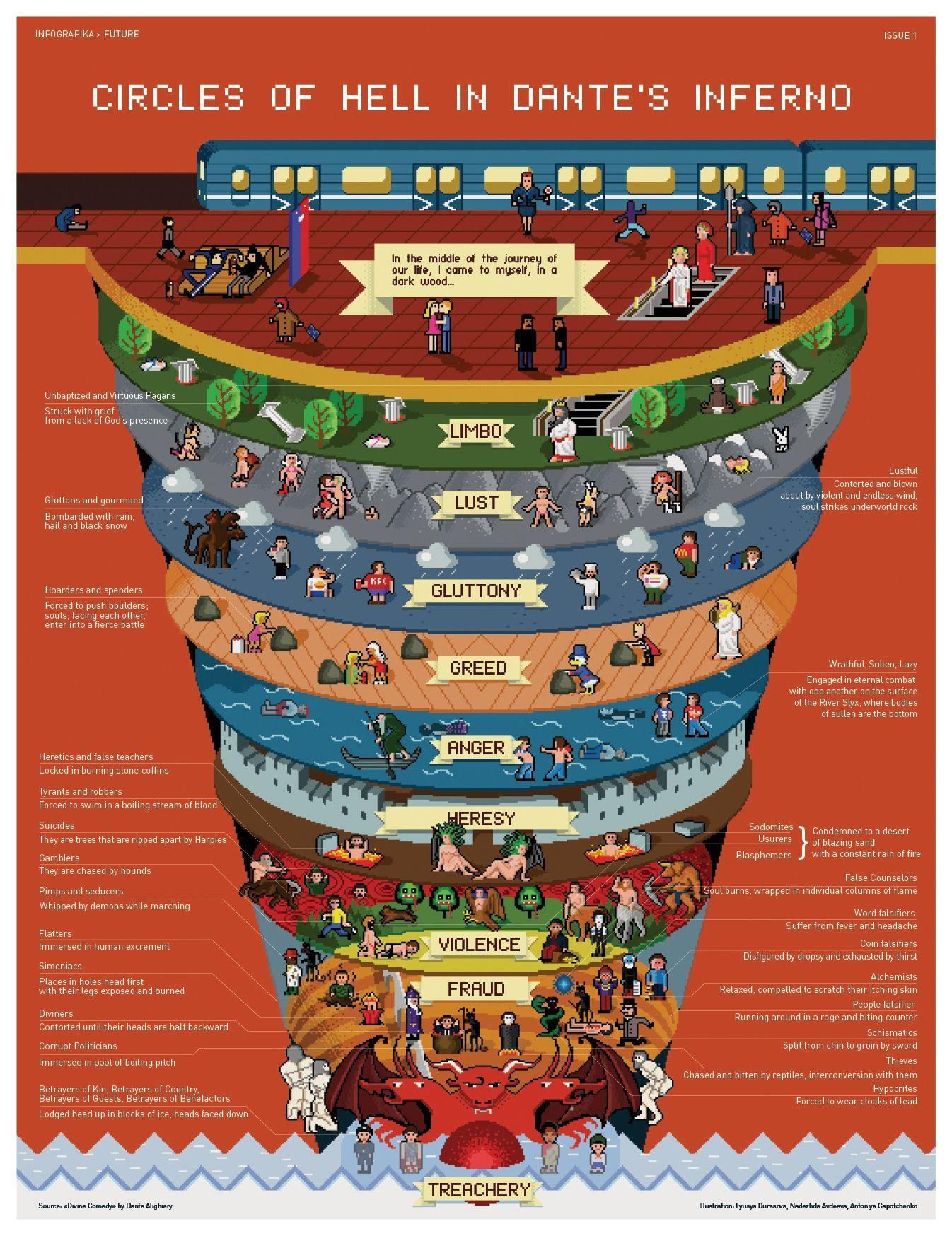Inferno
Do not be afraid; our fate cannot be taken from us; it is a gift.
At grief so deep the tongue must wag in vain; the language of our sense and memory lacks the vocabulary of such pain.

Inferno by Dante Alighieri takes place on Good Friday in the year 1300, where the poet begins his narration lost within a large forest being chased by three beasts. With the help of the Roman poet in ghost form Virgil, the book follows Dante’s journey through the layers of Hell. Inferno is considered a masterpiece of Italian literature and one of the most renowned works of the Middle Ages due to its backdrop of political and religious upheaval and its reflection of the social climate of its times.
Dante’s world building is incredibly unique and memorable from start to finish. He generates incredible interactions between the sinners of each layer of Hell in a way that had me very invested. The first layer of Hell, is home to the unbaptized and virtuous pagans (philosophers in other words) - including some of the greatest minds of Homer and Aristotle. As Dante and Virgil descend, the sins of each layer get more severe, and each punishment is tailored to each sin.
The wrathful and the sullen are punished by being submerged into the murky waters of the River Styx, representing their inability to control their emotions. Those who commit suicide are turned into various plants, trampled by others, wishing to be human again but denied, as they have committed a violent act against themselves and the gift of life from God. Sorcerers, astrologers, and false prophets have their heads turned backwards, such that it is “necessary to walk backward because they could not see ahead of them” as they walk forever. Those who betray their owners or God are frozen forever in an icy lake that symbolizes how they rejected their master, and now they are exempt from warmth (God’s light).
The sin in Inferno seems to be less an offense against God in many cases, but rather a determination of crime against humanity. I loved Dante’s choice to refer to real historical figures because it clearly reflects that Dante believes that actions have serious moral and spiritual consequences. As each sinner reflects upon their sin, Dante makes it clear that their own actions put them there - there is no injustice for one’s soul. While I didn’t agree with Dante’s criteria for sin (which is to be expected in the 700 year gap between us), I did appreciate the way that Dante does not hold back on the figures of his time, including certain Popes, kings, and political figures.
Given my inexperience with poetry, I struggled greatly with this book’s numerous translations more than I would like to admit, which is my only complaint of this book. I needed numerous references and guides, reading chapters ahead of time to fully grasp what was going on. While I doubt I’ll continue onto the next two books that document Dante’s journey through Purgatory and Heaven, this book gave me a lot to think about regarding human nature, the consequence of my actions, and the idea of true justice in the after life.
DNF
